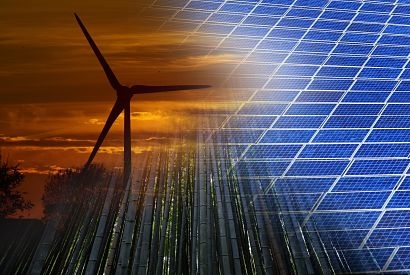
That’s according to a new analysis of unemployment data released today by E2 (Environmental Entrepreneurs), the American Council on Renewable Energy (ACORE), E4TheFuture, and BW Research Partnership.
The analysis of Department of Labor data found that 594,347 workers in clean energy occupations, representing 17.8 percent of the industry’s workforce, filed for unemployment benefits in April and March.
The number of jobs lost is more than double the number of clean energy jobs created since 2017. Before March, clean energy had been one of the US economy’s biggest and fastest-growing employment sectors, growing 10.4 percent since 2015 to 3.4 million jobs at the end of 2019. That made clean energy by far the biggest employer of workers in all energy occupations, employing nearly three times as many people as the fossil fuel industry.
In the coming months, the analysis projects that job losses will continue to rise unless Congress and the Trump administration take quick and substantive action to support the clean energy industry and its workers. If nothing is done, the report forecasts that 850,000 clean energy workers will have filed for unemployment by June 30.
A loss of that magnitude would mean that one out of every four clean energy workers employed at the start of 2020 will have lost their jobs in just six months.
“It’s a lot worse that we thought” said Bob Keefe, executive director of the national, nonpartisan business group E2. “Americans in every state – red, blue, purple - are losing clean energy jobs across a wide swath of occupations – electricians, technicians, installers and factory workers. Congress needs to include clean energy in any future economic stimulus package to help stem this massive loss of jobs today and set the foundation for a stronger, cleaner and more resilient economy tomorrow.”
Steve Cowell, President, E4TheFuture, added that unprecedented economic impacts of COVID-19 are beyond daunting, for the whole clean energy industry - though the industry is nevertheless setting its sights on recovery and adapting to seek possible solutions.
According to the unemployment data analysis, energy efficiency lost more jobs than any other clean energy sector for the second consecutive month in April. The energy efficiency sector accounted for nearly 70 percent of all clean energy job losses in April, with more than 310,000 energy efficiency workers filing for unemployment.
Renewable energy lost nearly 13 percent of its workforce, with more than 71,800 unemployment filings in April. There are now nearly 100,000 renewable energy workers out of work since March. If trends continue, more than one out of every five renewable energy workers will soon be jobless.
Both the clean grid and storage sector and the clean vehicles sector lost 14 percent of their workforces in April, losing 54,700 jobs combined. In total, those sectors have lost 26,200 and 46,500 jobs, respectively.
The clean fuels sector lost the largest percentage of its workforce among all clean energy industries, losing 10,400 jobs in April, or 26 percent of its workforce. Since March, the sector has lost 12,500 jobs or more than one-third of its workforce.
California continues to be the hardest hit state in terms of total job losses, losing 77,900 jobs in April alone and more than 100,000 since the crisis began. Texas, Michigan, Florida, and Georgia also had a high total of clean energy unemployment filings in April, with each state experiencing more than 22,000 job losses. An additional 23 other states had at least 5,000 clean energy unemployment filings, according to the new analysis.
While Kentucky, Hawaii, and Louisiana all saw job losses exceed 25 percent of their clean energy workforces, no state was hit harder in terms of total number and share of its clean energy workforce than Georgia. In addition to suffering the fifth most total job losses, the state lost 31 percent of its clean energy workforce - the highest percentage of any state and double the national average of 15 percent.
April’s edition of the analysis expanded to include losses by metropolitan areas and counties. By total job losses, five counties lost more than 5,000 clean energy jobs in April alone, including Los Angeles County, Calif.; King County, Wash.; Harris County, Texas; San Diego County, Calif.; and Cook County, Ill. As a share of their workforces, California and Georgia counties suffered the most, with four counties in each state losing at least 23 percent of their clean energy jobs.
The metro areas that lost the most clean energy jobs in April were metro areas with the largest populations and economies, including Los Angeles, New York City, and Chicago. Metro areas that were hit hardest as a share of their workforce varied more, with Cleveland, Las Vegas, New Orleans, and Pittsburgh all losing at least 18 percent of their clean energy jobs.
For a full breakdown of clean energy jobs losses in each state, see the full analysis here.
For additional information:
American Council on Renewable Energy (ACORE)

